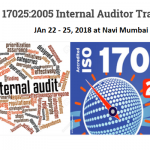Can ISO 9001:2008 design and development criteria be applied to training and educational programs?
The answer is a definite yes. While the ISO 9001 design and development model is usually associated with manufacturing activities, it?s important to realize that the intent of this criterion has much wider application. These requirements not only relate to the design of product, but the design of processes and services as well.
If we consider the design of training or educational programs, we find that the basic requirements specified in the ISO 9001 standard are by no means unique or foreign. In fact, these requirements can be applied quite easily to training and educational design, and are generally consistent with accepted design methodologies:
? Design Planning – includes project timelines, scope documents, and other information that defines the stages of design and development, design review, verification and validation activities, and design responsibilities.
? Interface Management – includes interested parties, such as the student, the learning institution, their instructors/teachers, representatives of industry, and even parents.
? Design Inputs – includes needs or requirements defined by the student, parents, institution, industry, state and other interested parties; technological developments, and feedback from past experiences could also be considered.
? Design Outputs – includes the resulting specifications that define the learning program. This covers learning objectives, course charts, instruction and/or lessons plans. Specifications for learning aids, equipment and/or materials needed, room requirements (e.g., room size, table size, number of chairs, etc.), and instructor qualification requirements would also fall into this category.
? Design Reviews – includes initial/kick-off meetings to review the design inputs, progress meetings to review the progression of the design to the design plan and final reviews to evaluate the completed program design for approval.
? Design Verification – includes the design reviews stated above, evaluation against similar programs and other activities.
? Design Validation – includes consideration of data obtained from pilot courses, course quizzes and exams, feedback from students (course critiques), feedback from employers and other interested parties including employers and industry.
? Change Control – includes control methods for reviewing and approving proposed changes to existing designs, as well as methods of interface management (such as involvement and notification of affected parties) and configuration control.
Needless to say, the examples above are not intended to be all-inclusive. The specific configuration and attributes of a design program should be based on the training or educational event being developed. Regardless of the specifics of the design program however, the basic framework laid out in the ISO 9001:2008 standard can be applied, and it can be used as an effective means of controlling the design and development process.
The answer is a definite yes.






